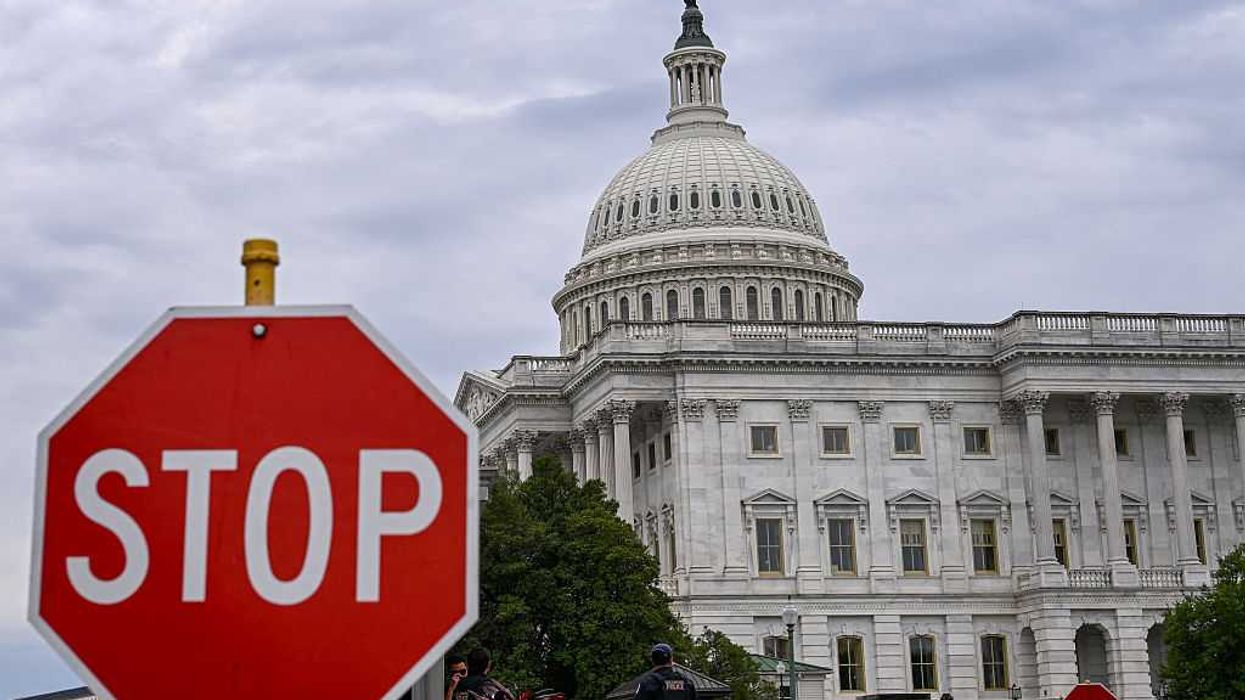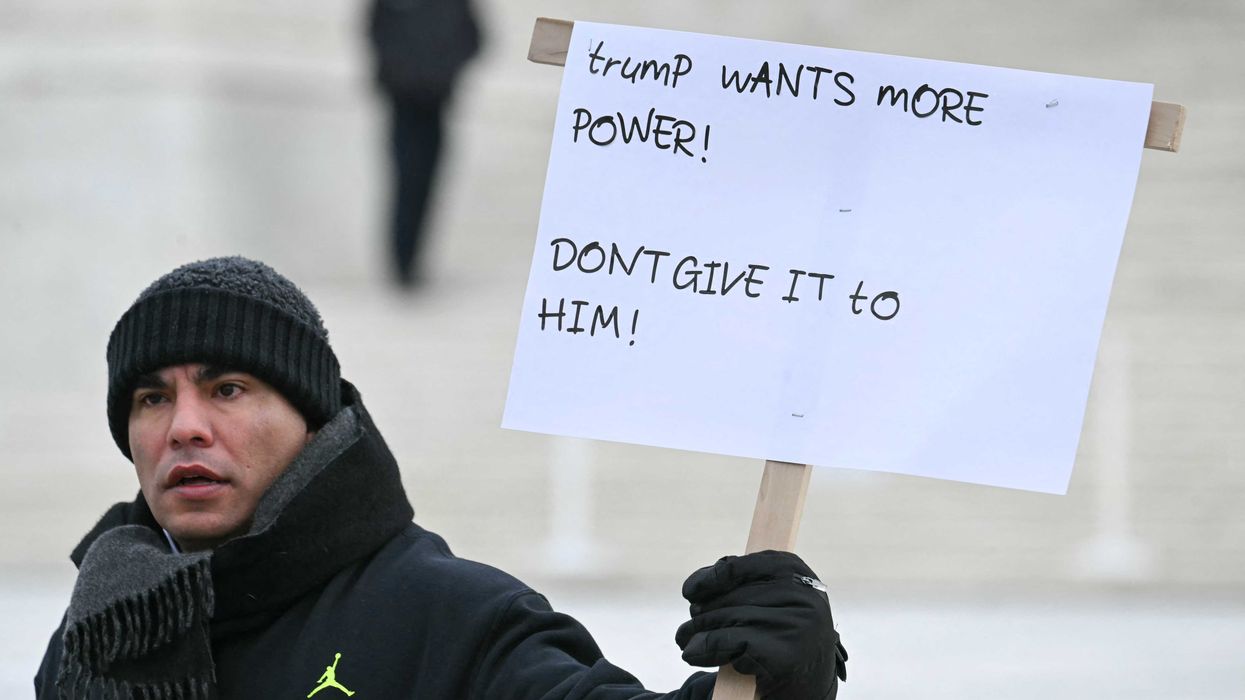Glenn has warned about progressivism for more than a decade. So what is progressivism and who are progressives? This 12-part series explores those questions, backed up with research and facts from Glenn's new book Liars: How Progressives Exploit Our Fear for Power and Control.
At its core, progressivism is an insatiable thirst for control. The endgame of progressives is to build a massive all-controlling welfare state that holds us hostage to their preferences. After all, they know what's best.
Progressive leaders are masters of lies and deception, using fear to control and subjugate free people. Frighteningly, their efforts often involve the loss of free will, murder or mutilation of their fellow human beings --- always in the name of a better world. Ever hear the expression, "My way or the highway"? It might as well have been coined by a progressive.
Share this series with everyone you know. The centuries-old history of progressivism must be exposed and taught to all freedom-loving people.
Listen to the full series:
Progressive Liars Part I: Fear and Hope
Chicago coliseum, July 9, 1896: Thirty-six-year old William Jennings Bryan put forth the Democratic Party’s proposed national platform to a cheering crowd that frantically waved red bandannas in a sign of solidarity. Bryan became convinced that victory was his. A new monetary policy based on the coinage of silver, free silver, had proven to be an even more enticing message than he had expected. The new supply of money would relieve crippling debt for the impoverished voters Bryan sought to mobilize. As he neared the climax of his remarks, he mustered every last ounce of energy and unleashed some of the most famous lines in American political rhetoric:
If they dare come out in the open field,” he thundered, “And defend the gold standard as a good thing, we shall fight them to the uttermost, having behind us the producing masses of the nations of the world and having behind us the commercial interests and the laboring interests and the toiling masses.
Bryan’s speech launched the era of progressivism, featuring the biggest liars in American history. These liars achieved their so-called progress using fear and hope, two uniquely human feelings, to impose their will upon mankind.
Progressive Liars Part II: German Roots
To find the roots of progressivism, one has to go back to Germany in the 1500s, and the Protestant Reformation against the Catholic Church by Martin Luther. Was Luther a progressive? Hardly, but his ideas about man’s relationship with God have morphed and metastasized the past 500 years into something unrecognizable from what he originally intended. Luther’s declaration that man could have a personal relationship with God without enlisting a papal leader inadvertently started the ball rolling toward progressivism.
More than two centuries later in the late 1700s, German professor George Wilhelm Friedrich Hegel would use his disbelief in God for a similar purpose — to better humanity. After surviving an epidemic, Hegel’s views on God were irrevocably changed. Hegel concluded that experts and knowledgeable persons should rule — not God — with the most perfect government and unlimited authority over the individual. Through the State and its rulers, man would essentially become God on earth. This was the foundational principle that eventually became known as progressivism.
Progressive Liars Part III: Margaret Sanger
Margaret Sanger, the so-called mother of birth control and founder of what has become modern day Planned Parenthood, believed in a policy of improvement to “create a race of thoroughbreds.”
In 1922, Sanger wrote:
Those least fit to carry on the race are increasing most rapidly. People who cannot support their own offspring are encouraged by church and state to produce large families. Many of the children thus begotten are diseased and feebleminded. Many become criminals. Funds that should be used to raise the standard of our civilization are diverted to the maintenance of those who should have never been born.
In 1926, Sanger presented her views to a women’s chapter of the Ku Klux Klan, which led to more speaking engagements to similar groups. How did an American woman arrive at this kind of thinking? As with many progressive leaders, a traumatic childhood event helped shape her radical beliefs about preventing birth among certain “undesirables.”
Progressive Liars Part IV: Woodrow Wilson
In 1912, there were at least two massive disasters for the United States of America: The sinking of the Titanic and the election of progressive Woodrow Wilson. Just a month after the completion of the grim Titanic recovery operation, Woodrow Wilson addressed the prestigious economic club of New York at a hotel bearing the name of one of the Titanic’s most prominent victims.
Speaking to business leaders at the Time Squares Hotel Astor, Wilson pushed back against the complaints that his ideas opposed the free enterprise system. He believed that wealthy families such as the Astors had turned the American Republic into their own fiefdom. The rich, he said, had to be reined in and their wealth confiscated for the public good, if necessary:
The very thing that government cannot let alone is business.
Government cannot take its hands off business. Government must regulate business because that is the foundation of every other relationship.
The tragic sinking of the Titanic, a ship that its owners boasted was unsinkable, was the consequence of a hubristic, humanist assumption about man’s ability to control natural law and to defy the will of God. And so was the candidacy of Woodrow Wilson.
Few presidents have displayed such open contempt for the Constitution they swore to preserve, protect and defend. Even fewer had such severe disdain for women, minorities and anyone else who deviated from Wilson’s view of the “perfect citizen.”
Progressive Liars Part V: Prohibition
Wayne Wheeler, raised on an Ohio farm, became the leading force behind America’s prohibition movement — and he was merciless in his crusade. Frightening childhood experiences with drunk farmhands scarred Wheeler’s adolescence, convincing him that only full-scale abolition across America would bring safety and comfort to the collective. For Wheeler, the perfect world required absolute control over the individual.
Perhaps the most powerful force in the nation regarding alcohol, Wheeler led the Anti-Saloon League, coining the term “pressure group” to explain the league’s tactics. By 1903, the Anti-Saloon League forced all 70 of their political targets out of office. In 1915, Wheeler became general counsel for the Anti-Saloon League of America and one of the most effective lobbyists of his time.
Thanks in large part to Wheeler’s efforts, the Eighteenth Amendment to the U.S. Constitution went into effect in 1920, banning the manufacture, sale and transportation of intoxicating liquors in the United States. Once law-abiding American citizens were now breaking federal law by drinking, blurring the lines between right and wrong. Instead of creating a new perfect world, the law opened the door for bootleggers and organized crime to make millions of dollars from the illegal distribution of liquor.
With the new constitutional amendment, Wheeler believed alcohol consumption to be treasonous, and came up with the sick idea of poisoning whisky and releasing it into the public. Under Wheeler’s poisonous plan, the government identified people drinking illegally when they became sick or died — and it was wildly effective. Up to 50,000 Americans paid the ultimate progressive price, essentially murdered by Wayne Wheeler and the U.S. government.
Progressive Liars Part VI: FDR Part I
Franklin Delano Roosevelt famously said, “The only thing we have to fear is fear itself.” He should have added one thing: progressivism.
The nation had scarcely regained its footing from the constitutional crisis created by FDR’s hero Woodrow Wilson, a man who oversaw the internment of over 170,000 American citizens without probable cause or due process. In subsequent years, FDR would follow Wilson’s blueprint, authorizing the physical removal of all Japanese Americans into internment camps.
FDR knew he could take Wilson’s revolutionary but academic critique of America and mold it into something practical and concrete. With the term “progressivism” waning in the 1920s under small-government Presidents Harding and Coolidge, FDR also knew he had a branding problem. This led to his purposeful rebranding of progressive ideology during the 1932 Democratic National Convention:
Ours must be a party of liberal thought, of planned action on enlightened international outlook and on the greatest good to the greatest number of our citizens.
It was a noble lie. FDR’s new liberalism betrayed the classic liberal thought of John Locke, Adam Smith and America’s Founding Fathers. This new interpretation of American politics and governance elevated the state above the individual. Rights no longer came from the individual, much less God, but directly from the government — everything that classical liberals had rejected about the divine right of monarchs and the state’s tendency to trample individual liberty.
Progressive Liars Part VII: FDR Part II
Liberals, the media and academia worship at the altar of FDR and the anti-constitutional, gigantic government he created. They teach our children that his policies ended The Great Depression of the 1930s, but the exact opposite is true. Roosevelt’s disastrous policies actually extended the depression by years.
After implementing his socialized agenda known as The New Deal, which included the legalized Ponzi scheme of Social Security, the United States was still mired in the deepest and worst depression in its history. Roosevelt spent and regulated like a drunken sailor, and he paid for it by vastly expanding and steeping the tax code. What was only 400 pages at the start of FDR’s administration ballooned to more than 8,200 pages by its end. Designed to make individuals and businesses pay their “fair share,” it stifled economic growth and reshaped the economic promise of America from individual achievement to redistributive equality. FDR turned what would have been a depression into The Great Depression through his social and financial engineering.
From 1933 to 1940, the average annual unemployment rate averaged 18.6 percent. In 1937 and 1938, the economy collapsed into a double-dip recession. From 1937 to 1938, industrial production declined by 33 percent. National income hemorrhaged at 13 percent. Wages went down by 35 percent and an estimated four million workers lost their jobs.
Roosevelt won reelection in 1940 by promising to keep American boys out of the fight against Adolf Hitler. That eventually became another broken promise — and his saving grace. America’s participation in World War II kickstarted the economy, finally ending the misery brought on by The Great Depression.
Progressive Liars Part VIII: FDR Part III
Infatuated progressive scholars credit Franklin Delano Roosevelt with ending The Great Depression when, in fact, American manufacturing kickstarted the economy enough to negate the damage done by his massive government programs. Scholars and leftists alike also ignore his internment of over 100,000 Japanese-Americans during World War II, just as his progressive hero Woodrow Wilson had done with Germans and Italians during World War I. Most of these loyal Americans never got their homes back. Unfortunately, the loss of liberty under FDR didn’t stop there.
Under cover of war, President Roosevelt illegally authorized agents to wiretap the phones of not just aliens who threatened national security, but also potential political enemies and even political friends. Roosevelt’s spying targets included former President Herbert Hoover, 1940 Republican presidential opponent Wendell Wilke and critical journalists. FDR also requested a tax audit on The New York Times and had the heads of various agencies, including the FBI and the Department of Justice, investigate several newspaper publishers in a failed witch hunt for Nazi ties.
As World War II wound down, FDR proposed a second Bill of Rights, arguing true individual freedom could not exist without economic security and independence. He may have once claimed the only thing to fear was fear itself, but in reality, he wanted Americans to fear a host of things. Fear after all, opened the door to things people otherwise wouldn’t think possible. Additionally, FDR warned that if Americans let his wartime reforms go away, they might as well have lost the war.
Incredibly, this strategy is successfully employed by progressives in government over and over again. Legislation during a crisis lives on like a cockroach, able to survive even in the worst of conditions. In FDR’s wartime America, rights were to be granted no longer by our creator, but the federal government.
Progressive Liars Part IX: LBJ Part I
Like the state he loved, Lyndon Baines Johnson was a large and imposing man. His head, ears and hands, even his voice, seemed to overwhelm those around him, traits that helped him make deals with timid, cowering colleagues. In the aftermath of President Kennedy’s assassination in 1963, Johnson, who had never cared much for JFK’s policies, decided to remodel the Kennedy presidency after his two idols: Woodrow Wilson and Franklin Roosevelt. After Kennedy’s assassination, LBJ finally had the chance to live up to the legacy of his “second daddy” and make the spirit of Roosevelt proud.
LBJ had “a specific objective” in mind that guided his presidency from the start: Outdo Franklin Roosevelt as the champion of everyday Americans to become the next generation’s FDR. He would be what he called “their daddy,” whether they liked it or not. Wilson had successfully organized progressivism as a political force and FDR built new progressive economic institutions during The Great Depression. LBJ would build on that legacy by spreading progressivism into mainstream America at a time of similar tumult and disorder. He would set in motion the destructive forces of nihilism, hedonism and blasphemy that marked the 1960s, a decade that would change America fundamentally, forever.
Progressive Liars Part X: LBJ Part II
Lyndon Johnson’s Great Society was the New Deal on steroids. It was the most destructive anti-Democratic and anti-entrepreneurial program of the 20th century. Johnson’s vision was utopian, statist and reckless, but the grief of a nation reeling from an assassinated president, and the general sense that America was spiraling out of control, spurred LBJ to act.
The Great Society started with Johnson’s disastrous War On Poverty. In reality, it wasn’t a War On Poverty at all. It was a war against prosperity and success. Like all progressives, Johnson believed in economic leveling. Instead of lifting everyone up through commerce or capitalism, he forced people into an economic purgatory where mediocrity was the norm and striving for greatness was discouraged.
Under LBJ, the nation witnessed the true creation of the welfare state, based on massive entitlement programs and predicated on the government’s ability to drive the populace to an ambition-destroying focus on inner meaning and quality of life, instead of character, ambition and success. This created a crisis of conscience and confidence in people, making them both susceptible to undermining traditional norms and predisposed to reliance on the state to handle things that were too hard for them.
LBJ laid the groundwork to create an environment of self-actualization — through the government, conservation programs, federal patronage of the arts, public broadcasting and more. These were not meant to foster national elevation or celebrate America’s greatness. They were created as a corporate secular replacement of religion, as sources of spiritual fulfillment for the masses. Replace God with government, and you control not just people’s minds, but their hearts and souls. Using these fears, he persuaded millions of Americans to abandon their traditional values of hard work and self-reliance in exchange for the soullessness of self-actualization.
Progressive Liars Part XI: Stuart Chase and System X
You know progressives like Woodrow Wilson, Franklin Roosevelt and Lyndon Johnson, but you may not know Stuart Chase, the man called the progressive prophet. An American economist born in 1888, Chase was influenced by Fabian socialists, as well as communist social and educational experiments being conducted in the Soviet Union in the 1930s. At the conclusion of his 1932 book, A New Deal, Chase wrote, “Why should the Soviets have all the fun remaking the world?” What sort of government and economic system did progressives like Stuart Chase want to adopt if they considered constitutionalism and the free market passe? A strong centralized government controlling everything — the government, the banking system, education, employment, food, housing, medical care — so the people wouldn’t make poor decisions for themselves.
Chase had just one problem as he envisioned his utopia on earth. He couldn’t come up with a name for it. Socialism, fascism and state capitalism just didn’t seem to fit the bill. Like any good Fabian, he shied away from calling socialism by its name. Instead, he labeled America’s future system “something called X.” And as Chase believed, System X was already displacing the system of free enterprise all over the world.
Progressive Liars Part XII: Barack Obama
Chicago, Illinois, July 1995, the future president of the United States stood in the living room of a radical domestic terrorist. They were in Hyde Park, a Chicago neighborhood of tree-lined streets, dotted with handsome old stones and brick houses. In this highly segregated city, Hyde Park stood out as a vibrant, racially diverse, but monolithic melting pot. There couldn't be a more fitting place for the future commander-in-chief to live, just mere blocks away from former domestic terrorist Bill Ayers and Nation of Islam leader Louis Farrakhan.
Hyde Park, home to the prestigious University of Chicago, was also just a few blocks from Chicago's notorious South Side. The ivory tower of elitist academics loomed over crippled communities, riddled with drugs, gangs and broken homes. The slums and Section 8 housing projects were homes to some of the highest murder rates in the civilized world, the wreckage caused by decades of leftist rule.
This would be the environment in which radical community organizer Barack Obama received the advice that endeared a nation and helped secure him the presidency of the United States: If you really want to change things, you've got to drop the radical pose for the radical ends.
Listen to all serials at glennbeck.com/serials

 ALEX WROBLEWSKI / Contributor | Getty Images
ALEX WROBLEWSKI / Contributor | Getty Images
 JIM WATSON / Contributor | Getty Images
JIM WATSON / Contributor | Getty Images Joe Raedle / Staff | Getty Images
Joe Raedle / Staff | Getty Images AASHISH KIPHAYET / Contributor | Getty Images
AASHISH KIPHAYET / Contributor | Getty Images